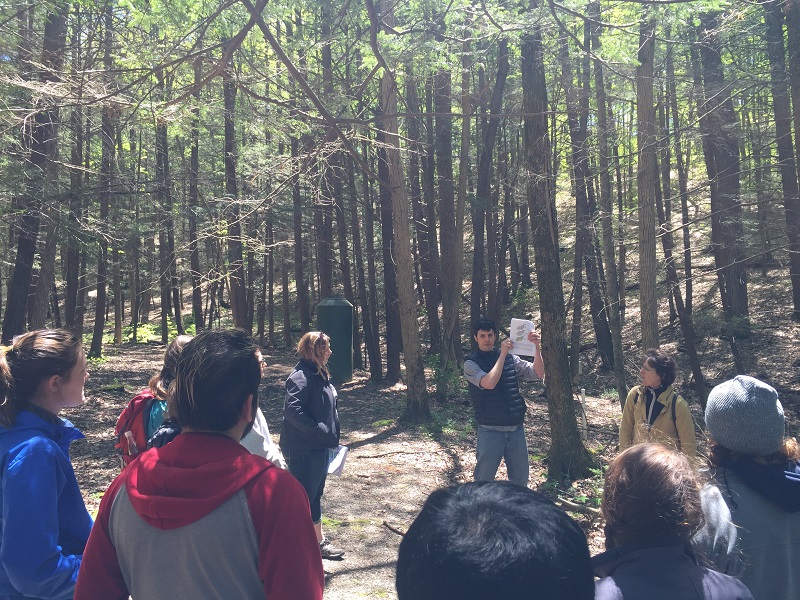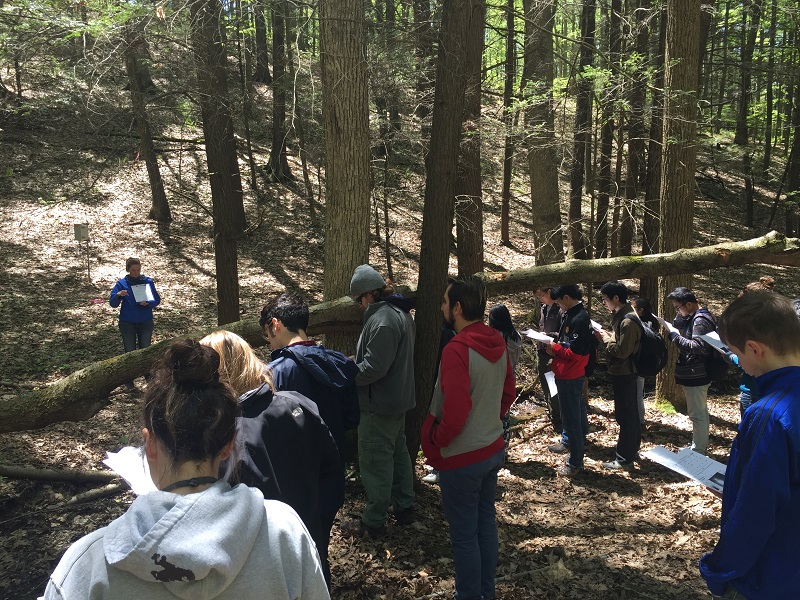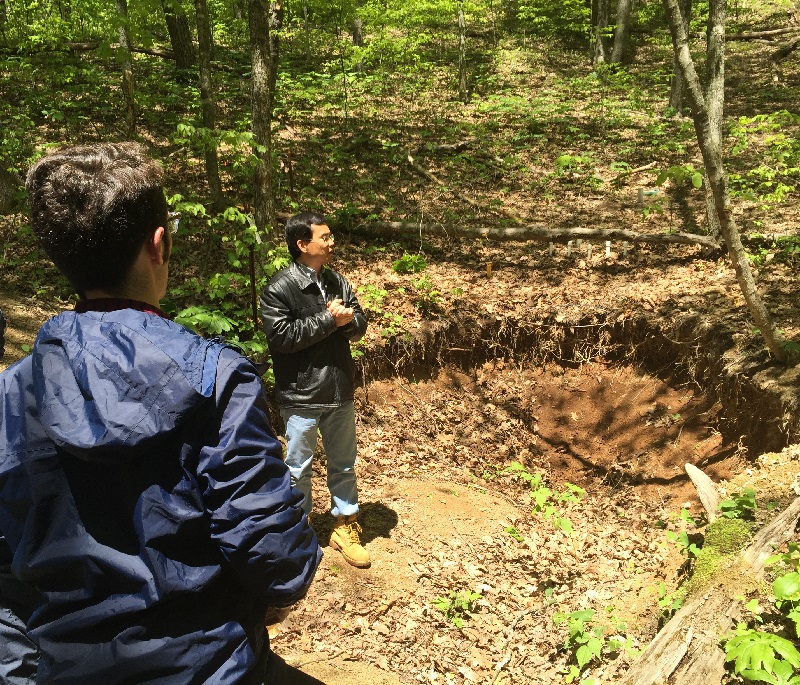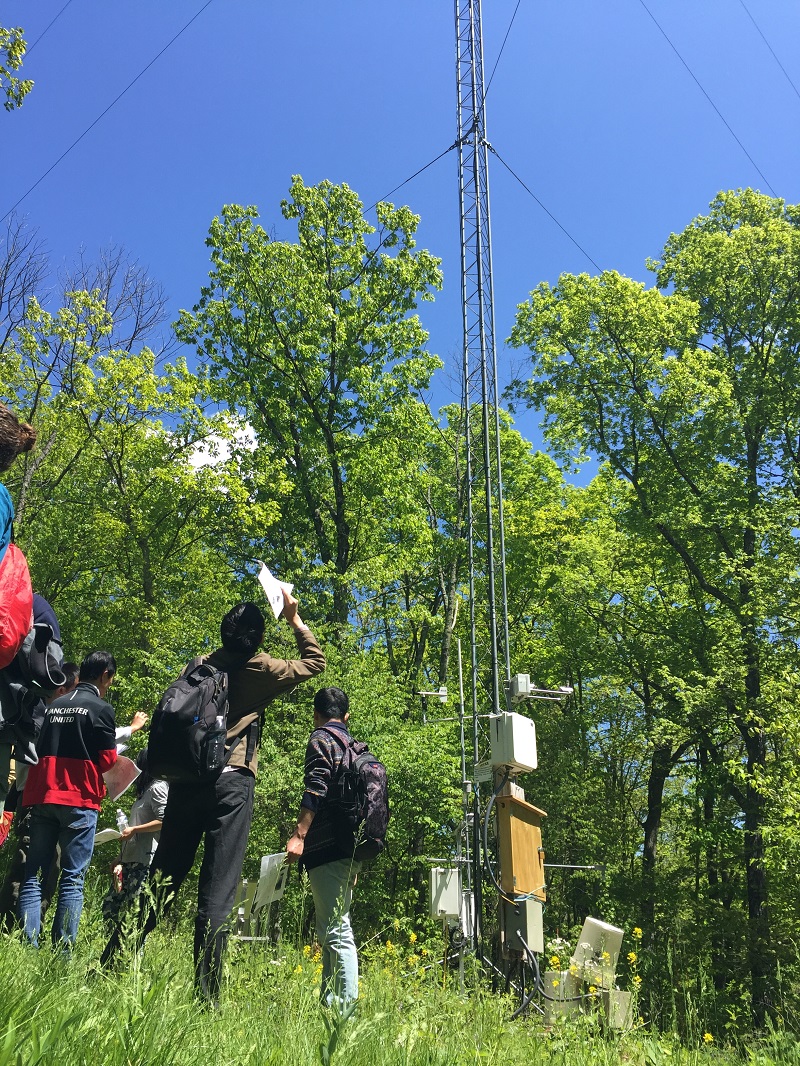
Photo: Professor Dibiase introducing visitors to the SSHCZO’s guidebook.
The SSHCZO is heavily instrumented with many tools to measure tree growth, root growth, soil gases, soil water, soil profiles, water transport, particulate transport and many other things. One of the key experiments that have developed here is landscape evolution and why different slopes in the watershed behave differently, with respect to soil, vegetation, and geochemistry.

Photo: Visitors being introduced to the south facing slope and associated swales.
The soils at SSHCZO have been measured for dozens of different properties and it is amazing to hear the various experiments that have been conducted since becoming a CZO. The soils at SSHCZO vary strongly with topography and are formed from the weathering of shale and shale deposits from the last major glaciation. Although SSHCZO was not covered by an ice sheet during the last major glaciation, periglacial processes (little vegetation, wind and water controlling deposition of materials) have influenced the parent material. The development of hydropedology has been lead by Penn State’s professor Henry Lin.

Photo: Henry Lin showing off their open soil.
The final frontier for soil biogeochemistry is clearly linking belowground features with aboveground processes. With this in mind, the sky literally is the limit and frontier for understanding biogeochemistry. At SSHCZO, a flux tower measures dozens of physical and chemical processes. They even have a timelapse camera to watch changes to leaves in the forest canopy.

I am excited to analyze samples for SSHCZO for trace metal biogeochemistry!